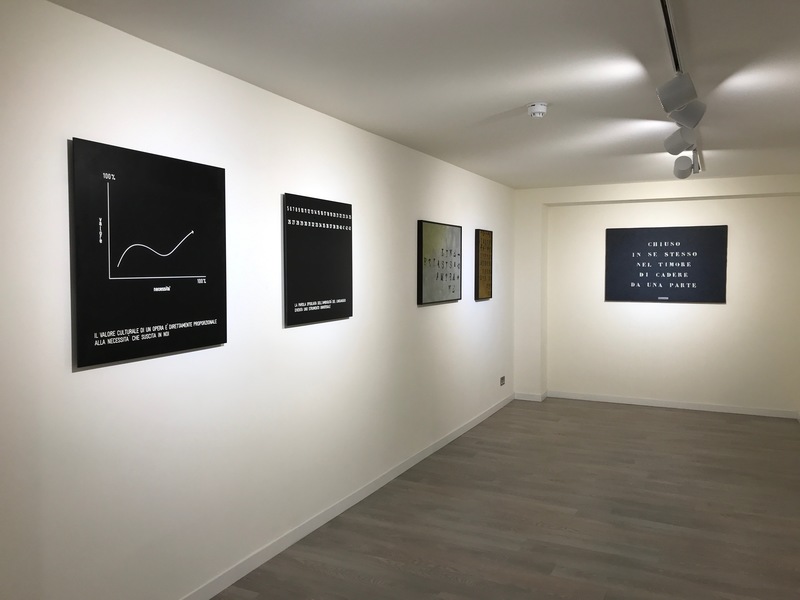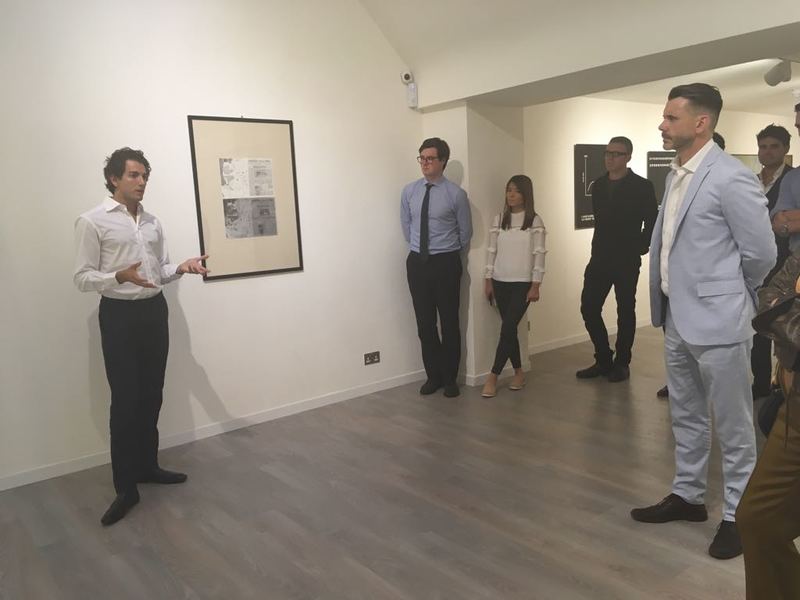Exhibition Review: ‘Difference and Affinity’, Cardi Gallery
Piero Tomassoni’s third curatorial project at Cardi Gallery, Mayfair, opened on 19 June. ‘Difference and Affinity’ is the first in a series of exhibitions tracing the dominant themes in Italian art during the 1960s and 1970s. The show reveals the work of four preeminent conceptual artists: Vincenzo Agnetti (1926-1981), Alighiero Boetti (1940-1994), Giulio Paolini (b.1940) and Emilio Prini (1943-2016).

Cardi Gallery, ‘Difference and Affinity’, curated by Piero Tomassoni
As one explores the show, spanning across two gallery floors, the artists’ distinct perspectives become clear. Agnetti, Boetti, Paolini and Prini, who explored and challenged the defining parameters of an artwork by creating works beyond what was considered the artistic norm, were at the forefront of Italian conceptual art. As conceptualism emerged throughout Europe and the Americas during the post-industrial landscape of the sixties, its trajectory expanded in different directions.
Similarly to other artists belonging to the ‘conceptual art’ movement, these Italian artists challenged modernist notions of the artist as a unique “craftsman” who created objects containing an anthropomorphic residue of their expressive selves. Their work explores the nature of art through the aesthetics of systems and series, diagrams and algorithms, codes and ciphers, and performance and installation. Yet, it is their poetic, elusive and even romantic approach to art that differentiates these pioneers from other conceptualists.
As Tomassoni describes in the exhibition’s accompanying essay, unlike British and Northern American conceptual art, which tended to fetishise a pragmatic approach to conceptualism – the idea being the only important aspect of a work, Agnetti, Boetti, Paolini and Prini allowed experimentation to guide their practices. This is exemplified by Prini, who did not see art as a method purely for creation, but also a process of subtraction and erasure. His subversive methodology gives his work a sense of ambiguity and resists the constraints of classification.

Piero Tomassoni discussing Alighiero Boetti’s Immagine e Somiglianza, 1976
Boetti, like Prini, was also briefly affiliated with Arte Povera before eventually distancing himself to further his individual practice. Boetti produced works using unconventional materials such as plaster, masonite, plexiglass, light fixtures and industrial matter. Boetti also took a keen interest in the relationship between serendipity and order, various systems of seriality, repetition and classification, and in non-Western traditions that were heavily influenced by his travels to Afghanistan and Pakistan.
Over the course of his career, Giulio Paolini developed a practice focused on questioning the relationships that emerge between an artwork and the viewer. His early conceptual piece, Disegno Geometrico (1960), symbolises this. It depicts a deceptively simple angular arrangement of lines that reflect the rectangular space. This work, which was produced when the artist was only 20, anticipated the shifting artistic landscape towards conceptualism and minimalism.

Giulio Paolini, Disegno Geometrico (1960). Image courtesy the artist.
Vincenzo Agnetti’s life and career embodied his artistic practice. For Agnetti, art was an activity of ‘global synthesis’. This meant transforming his existence into a series of artistic operations and experiments. His goal was to inextricably bind his subjectivity, consciousness and production together. This also extended to writing art criticism with his close friends and collaborators Piero Manzoni and Enrico Castellani. They would often contribute art theory to the leading journal of conceptual and formal developments in art, Azimuth.
As a writer, poet and critic, his output responds to the human condition through logic-based, experimental semantics and linguistic structures. Often witty, ironic and wry, his aphorisms intend to provoke as well as postulate. The exhibition exemplifies Agnetti’s dedication to the work’s visual language, which embraces the importance of formal qualities such as shape, colour, surface and content.

Installation shot. Works by Vincenzo Agnetti.
Tomassoni’s exhibition reinforces Italian conceptualism’s significant legacy. After conceptual art, we can no longer primarily reflect on art as merely the production and exhibition of individual things. Instead, social, economic and political factors become paramount. Advances in computerised technology, the rise of popular science, identity politics, liberation movements and the decline of industrialised manufacture are among the phenomena that have come to define this exciting and turbulent period. ‘Difference and Affinity’ allows one to reflect on the cultural climate in which these artists operated, whilst simultaneously appreciating their radical visual languages.
Difference and Affinity will be open to the public throughout the summer, until 7 September 2018.
Cover image: Installation shot. Works by Vincenzo Agnetti.
Author: George Greenhill
